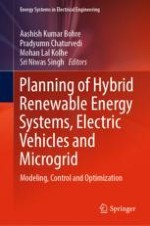This book focuses on various challenges, solutions, and emerging technologies in the operation, control, design, optimization, and protection of microgrids in the presence of hybrid renewable energy sources and electric vehicles. This book provides an insight into the potential applications and recent development of different types of renewable energy systems including AC/DC microgrids, RES integration issues with the grid, electric vehicle technology, etc. The book serves as an interdisciplinary platform for the audience working in the focused area to access information related to energy management, modeling, and control. It covers fundamental knowledge, design, mathematical modeling, applications, and practical issues with sufficient design problems and case studies with detailed planning aspects. This book will serve as a guide for researchers, academicians, practicing engineers, professionals, and scientists, as well as for graduate and postgraduate students working in the area of various applications of RES, Electric Vehicles, and AC/DC Microgrid.
